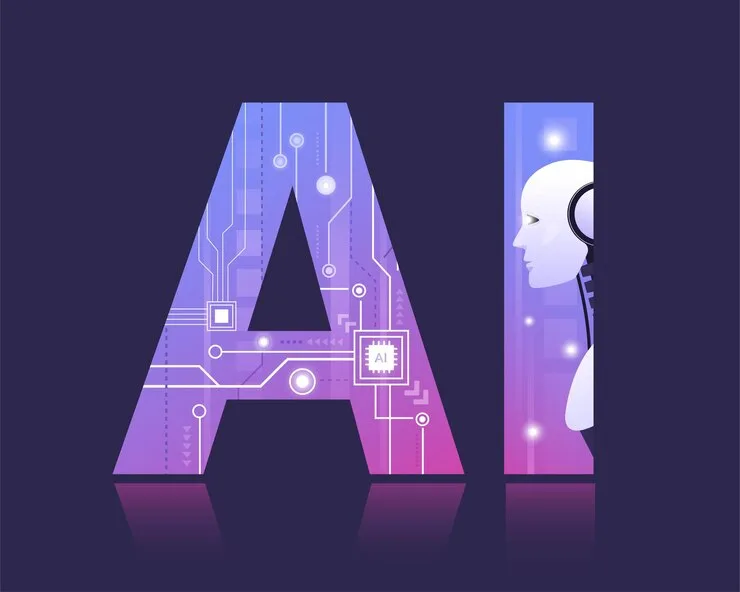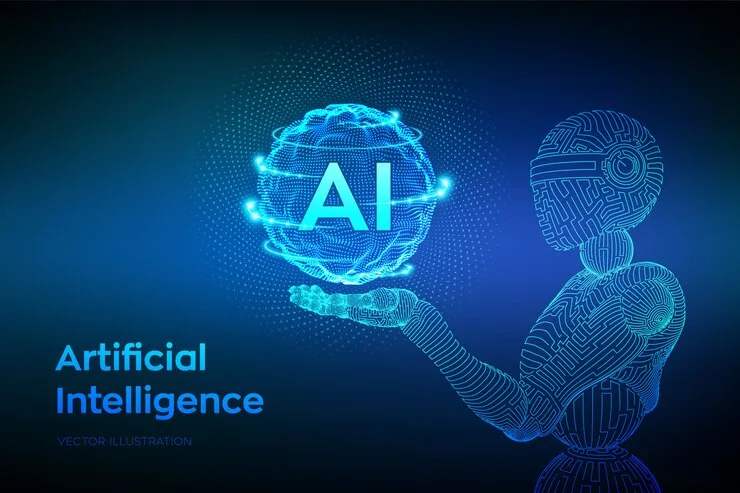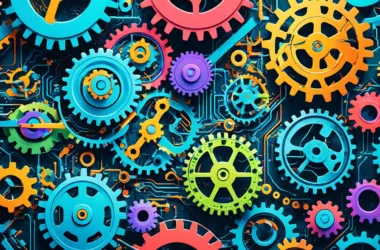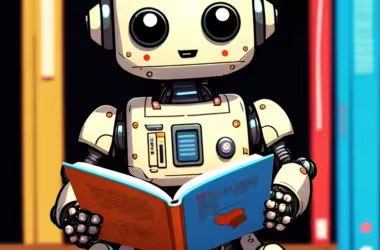Artificial Intelligence (AI) stands at the forefront of technological innovation, reshaping how we interact with machines and perceive intelligence. From virtual assistants to self-driving cars, AI permeates various aspects of our lives, promising unprecedented advancements and efficiencies.
But what exactly is AI, and how does it function? Delving into its intricacies, this article explores the complexities of AI basics, exploring its origins, capabilities, and potential impact on society.
What Is AI?
AI, or artificial intelligence, refers to the simulation of human intelligence processes by machines, especially computer systems. These processes include learning (acquiring information and rules for using the information), reasoning (using rules to reach approximate or definite conclusions), and self-correction.
How does AI work? AI encompasses various techniques and approaches. They include machine learning, deep learning, natural language processing, computer vision, etc.
These techniques enable AI systems to perform tasks that typically require human intelligence. For example, recognizing patterns, understanding language, making decisions, and solving problems.
AI is one of the most important things humanity is working on. It’s more profound than electricity or fire.
Sundar Pichai, CEO of Google
AI has applications in various fields, including healthcare, finance, transportation, entertainment, education, and more. It has the potential to revolutionize industries, improve efficiency, and enhance our daily lives.
However, AI raises ethical and societal concerns, such as job displacement, privacy issues, algorithm bias, and the potential to misuse robust AI systems.
Types Of Artificial Intelligence
Artificial intelligence (AI) can be categorized into several types based on capabilities and functionalities.
Here are some common types of artificial intelligence.

Narrow AI (Weak AI)
Narrow AI, also known as weak AI, is designed and trained for a specific or narrow range of tasks. These AI systems excel in their domain but cannot perform functions outside their programmed scope.
Examples include virtual assistants like Siri and Alexa, recommendation systems, and spam filters.
General AI (Strong AI)
General AI, strong AI, or artificial general intelligence (AGI) refers to AI systems that can understand, learn, and apply intelligence across tasks similar to human intelligence. AGI remains a theoretical concept that has yet to be developed.
Machine Learning (ML)
Machine learning is a subset of AI that enables systems to learn and improve from experience. It happens without being explicitly programmed automatically.
It involves algorithms that allow computers to learn patterns and make predictions or decisions based on data. Supervised learning, unsupervised learning, and reinforcement learning are common approaches in machine learning.
Deep Learning
Deep learning is a specialized subset of machine learning that utilizes artificial neural networks with multiple layers (deep neural networks). Thus, it learns complex patterns and representations from large volumes of data.
Deep learning has achieved remarkable success in image recognition, natural language processing, and speech recognition.
Reinforcement Learning
Reinforcement learning is a type of machine learning where an agent learns to make decisions by interacting with an environment. Hence, the agent receives feedback through rewards or penalties based on its actions. It enables it to learn optimal strategies for maximizing cumulative reward over time.
Reinforcement learning is often used in robotics, gaming, and autonomous systems.
Symbolic AI (Classical AI)
Symbolic AI, also known as classical AI or rule-based AI, relies on explicit representations of knowledge. Also, it uses the rules to perform reasoning and problem-solving tasks.
It involves symbolic manipulation and logical inference to derive conclusions. Expert systems and knowledge-based systems are examples of symbolic AI.
Generative AI
Generative AI is a form of artificial intelligence focused on creating entirely new content. Unlike traditional AI that analyzes and recognizes existing patterns, generative AI delves into the realm of imagination.
It can generate images, music, text, and even code, pushing the boundaries of creative expression. By analyzing massive datasets, generative AI learns the underlying structures and patterns within that data.
LLMs
Large language models (LLMs) are a powerful type of generative AI specifically focused on processing and generating text. These AI models are trained on colossal amounts of text data, enabling them to understand complex language structures and relationships between words.
LLMs excel at tasks like natural language processing, where they can translate languages, write different kinds of creative content, and even answer your questions in an informative way.
Applications Of Artificial Intelligence
Artificial intelligence (AI) has various applications across various industries and domains. Here are some notable applications of AI:
Healthcare:
- Medical diagnosis: AI systems can analyze medical images, such as X-rays, MRIs, and CT scans, to assist healthcare professionals in diagnosing diseases and conditions.
- Drug discovery: AI algorithms can analyze large datasets to identify potential drug candidates, predict drug interactions, and accelerate drug discovery.
- Personalized treatment: AI-powered systems can analyze patient data to recommend personalized treatment plans based on individual characteristics and medical history.
Finance:
- Fraud detection: AI algorithms can analyze financial transactions in real time to detect fraudulent activities and prevent economic losses.
- Algorithmic trading: AI systems can analyze market data and execute trades automatically based on predefined algorithms, leading to faster and more efficient trading strategies.
- Risk assessment: AI models can assess credit, insurance, and investment risks by analyzing historical data and identifying patterns and trends.
Autonomous Vehicles:
- Self-driving cars: AI technology enables vehicles to perceive their environment, navigate roads, and make real-time driving decisions without human intervention.
- Drones: AI-powered drones can be used for various applications, including aerial surveillance, package delivery, agriculture monitoring, and disaster response.
Retail:
- Personalized recommendations: AI algorithms analyze customer behavior and preferences to provide personalized product recommendations and improve customer engagement.
- Inventory management: AI systems optimize inventory levels, predict demand, and streamline supply chain operations to reduce costs and improve efficiency.
- Chatbots and virtual assistants: AI-powered chatbots and virtual assistants provide customer support, answer queries, and assist with online shopping.
Manufacturing:
- Predictive maintenance: AI systems analyze sensor data from machinery to predict equipment failures. Also, it aims for schedule maintenance proactively, reducing downtime and maintenance costs.
- Quality control: AI-powered vision systems inspect products for defects and deviations from quality standards, ensuring product quality and reducing defects.
Natural Language Processing (NLP):
- Language translation: AI models translate text and speech between different languages, facilitating communication and breaking language barriers.
- Sentiment analysis: AI algorithms analyze text data from social media, customer reviews, and surveys to gauge sentiment and extract insights about public opinion.
Cybersecurity:
- Threat detection: AI systems monitor network traffic, analyze patterns, and detect anomalies to identify and mitigate cybersecurity threats. For example, they include malware, phishing attacks, and data breaches.
A Peek at Trending AI Apps
The world of AI is booming, and there are some truly innovative apps making waves.
Here’s a look at a few of the hottest:
- ChatGPT: This AI chatbot takes the concept of conversation to a new level. Trained on a massive dataset of text and code,
- DALL-E: Unleash your inner artist with DALL-E. This AI image generation app allows you to describe a scene or concept with text, and DALL-E will use its knowledge to create a unique and realistic image.
- Midjourney: Similar to DALL-E, Midjourney lets you explore the world of AI-generated art. Feed it a text prompt describing your desired artwork, and Midjourney will craft stunning images that blend different artistic styles and dreamlike qualities.
- Grammarly: This AI-powered writing assistant helps you polish your prose. It checks for grammar mistakes, suggests improvements to sentence structuree.
- Otter.ai: Ever struggled to keep up with meeting notes? Otter.ai uses AI to transcribe your conversations in real-time, making it a valuable tool for students, and business professionals.
How Is AI Used Today?
Today, AI is used extensively across various industries and sectors, revolutionizing processes, enhancing efficiency, and driving innovation.
Here are some common ways AI is used in different domains:
● Virtual Assistants: Virtual assistants like Siri, Alexa, Google Assistant, and Cortana use AI algorithms to understand natural language queries. Hence, it helps to perform tasks such as setting reminders, providing weather updates, playing music, and controlling smart home devices.
● Autonomous Vehicles: Self-driving cars and drones use AI technology to perceive their environment, navigate roads. Also, it aims to make real-time driving decisions without human intervention. These vehicles have transportation, delivery services, agriculture, and surveillance applications.
● Natural Language Processing (NLP): NLP techniques enable language translation, sentiment analysis, text summarization, and speech recognition. NLP applications are used in virtual assistants, language translation services, customer support chatbots, and social media analytics.
● Cybersecurity: AI-powered cybersecurity solutions detect and mitigate threats by analyzing network traffic, identifying anomalies, and predicting potential security breaches. AI algorithms can detect malware, phishing attacks, and unauthorized access attempts.
● Education: AI is used in adaptive learning platforms to personalize educational content and learning experiences. Thus, it works based on students’ abilities, preferences, and learning styles. AI-powered tutoring systems provide personalized feedback and assistance to students.
● Entertainment: AI algorithms recommend movies, music, and videos based on user preferences and viewing history. AI-generated content, such as deepfake videos and AI-generated music, is also becoming more prevalent in the entertainment industry.
FAQs: Artificial Intelligence
Who Created AI?
AI has evolved over decades and involves contributions from numerous researchers and scientists. Some pioneers in AI include Alan Turing, who laid the theoretical groundwork for AI with his work on computation and machine intelligence.
Is Google An AI?
Google is a company that develops and utilizes AI technologies in various products and services. While Google itself is not an AI, it has incorporated AI into many of its products, such as search engines, virtual assistants (Google Assistant), language translation services, recommendation systems, and autonomous vehicles through its subsidiary Waymo.
How Was AI Created?
AI was created through theoretical research, experimentation, and technological advancements in computer science and related fields. Early AI systems were based on symbolic approaches, such as rule-based and expert systems, which utilized explicit representations of knowledge and logical reasoning.
Why Is AI invented?
AI was invented to create machines and systems that can perform tasks requiring human-like intelligence, such as reasoning, learning, perception, and decision-making.
Final Thoughts
In conclusion, Artificial Intelligence (AI) represents a paradigm shift in technology, empowering machines with human-like capabilities and reshaping industries across the globe.
As AI continues to evolve, its impact on society, economy, and culture will undoubtedly be profound. Embracing the potential of AI while addressing ethical and societal concerns will be crucial in navigating the ever-expanding realm of artificial intelligence.






